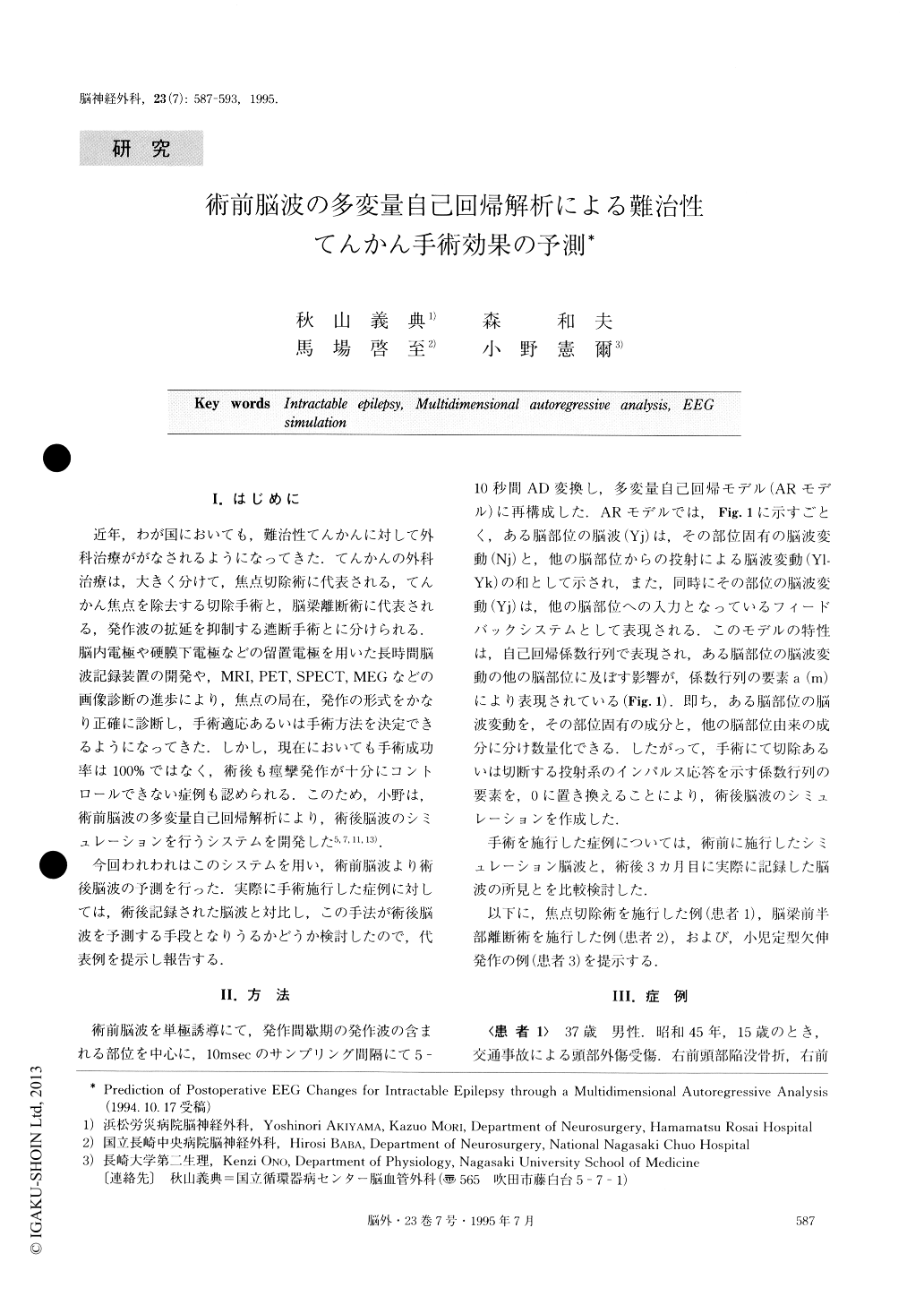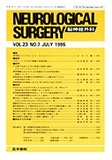Japanese
English
- 有料閲覧
- Abstract 文献概要
- 1ページ目 Look Inside
I.はじめに
近年,わが国においても,難治性てんかんに対して外科治療ががなされるようになってきた.てんかんの外科治療は,大きく分けて,焦点切除術に代表される,てんかん焦点を除去する切除手術と,脳梁離断術に代表される,発作波の拡延を抑制する遮断手術とに分けられる.脳内電極や硬膜下電極などの留置電極を用いた長時間脳波記録装置の開発や,MRI,PET,SPECT,MEGなどの画像診断の進歩により,焦点の局在,発作の形式をかなり正確に診断し,手術適応あるいは手術方法を決定できるようになってきた.しかし,現在においても手術成功率は100%ではなく,術後も痙攣発作が十分にコントロールできない症例も認められる.このため,小野は,術前脳波の多変量自己回帰解析により,術後脳波のシミュレーションを行うシステムを開発した5,7,11,13).
今回われわれはこのシステムを用い,術前脳波より術後脳波の予測を行った.実際に手術施行した症例に対しては,術後記録された脳波と対比し,この手法が術後脳波を予測する手段となりうるかどうか検討したので,代表例を提示し報告する.
Preoperative EEGs were quantitatively analyzed by means of a multidimensional autoregressive model (AR model) in order to predict postoperative EEGs. Re-corded preoperative EEGs were digitized at an interval of 10 msec. The AR model fitting was executed on each digitized data. As this model described a mul-tichannel feedback system having a peculiar activity in each site under observation, the interstructural relations could be described distinctly in the direction. Namely, the independent and the projected activities through the feedback circuits could be separately described for each brain site. Therefore, postoperative EEG could be simulated by elimination of the component in the AR model corresponding to each operative region. In this report, we presented three cases and discussed useful-ness of this method. Case 1 was a patient with post-traumatic epilepsy, who was treated with focal resec-tion. Preoperative EEGs revealed spike and wave dis-charges mainly in the right frontal region. Simulated postoperative EEGs based on elimination of component from the right frontal region in the AR model, corres-ponding to focal resection, revealed disappearance of spike and wave discharges. These findings were quite similar to observed postoperative EEGs. Case 2 was a patient with posttraumatic epilepsy, who was treated with anterior callosotomy. Preoperative EEGs revealed diffuse multifocal slow spike and wave discharges. Simulated postoperative EEGs, based on elimination of interhemispheric feedback pathways in the AR model, corresponding to anterior callosotomy, revealed marked lateralization of diffuse spike and wave discharges to the left hemisphere.These findings were qualitatively similar to observed postoperative EEGs. These results suggested that postoperative EEG changes could be well predicted by multidimensional autogressive analy-sis. Case 3 was a patient with typical absence, who was medically well controlled. Observed EEGs revealed 3 Hz spike and wave discharges. Simulated EEGs, based on elimination of interhemispheric feedback pathways in the AR model, corresponding to total callosotomy, did not reveal any changes. This result suggested that corpus callosum did not play an important role in mechanisms of generation of typical absence. In conclu-sion, analysis of EEGs by means of the AR model was a useful method for both making decision of surgery for intractable epilepsy and clarifying mechanisms of generation of epilepsy.

Copyright © 1995, Igaku-Shoin Ltd. All rights reserved.


